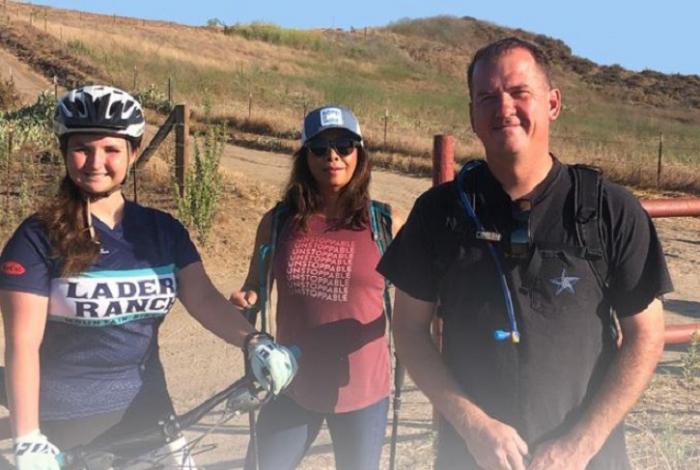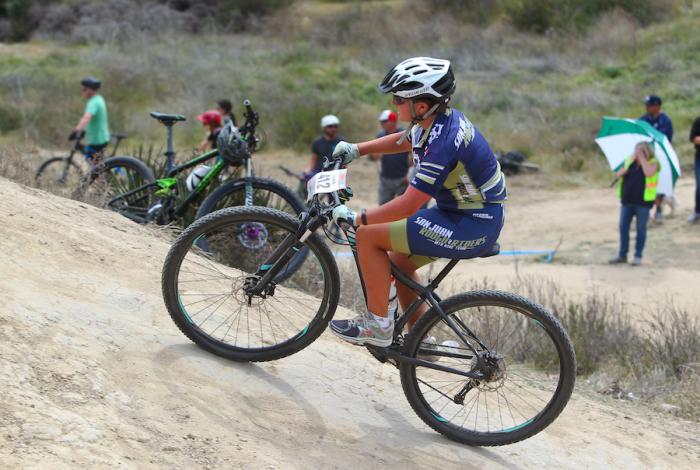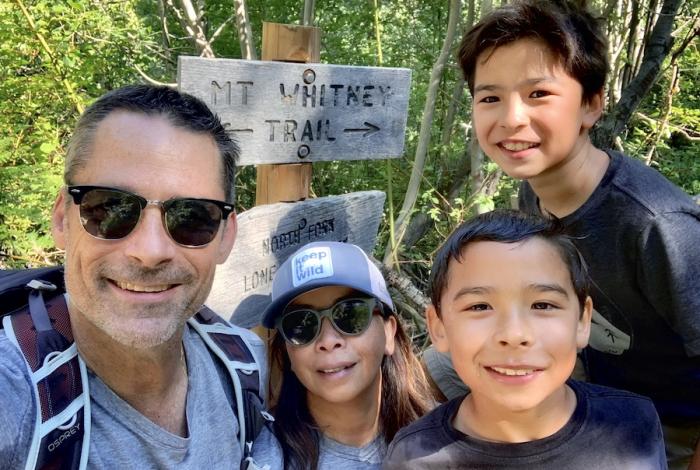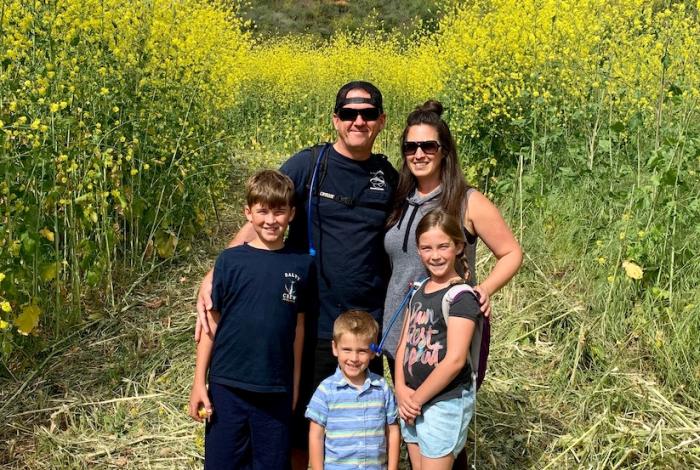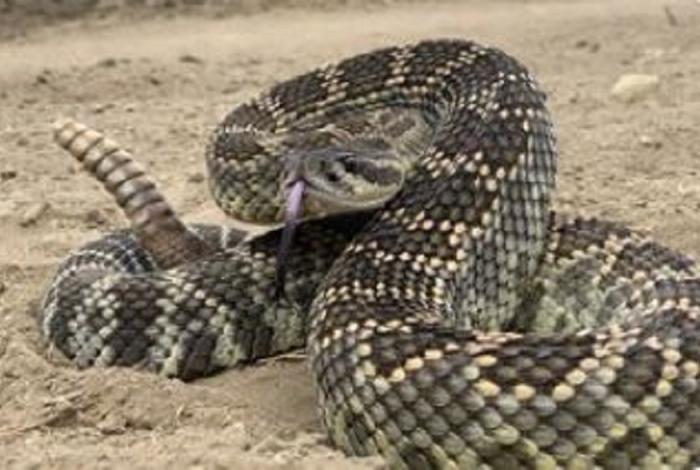Roots & Wings Online
- Homepage
- Communications
- Roots and Wings
- Resident Stories
- Hitting the Trails with Ladera’s Trai...
Summertime is here and it's a perfect time to explore the beauty and outdoor scenery that surrounds Ladera Ranch. It's time to hit the trails and enjoy the fresh air, exercise, and time with friends.
Getting outdoors can have a remarkable impact on our mental health and has a wonderful way of melting away stress, refreshing our souls, and spending time with friends.
Meet three of Ladera’s trail warriors who can teach us a little about trail adventure, safety, and a little about what drives them.
Meet Isabel Catalano a young but seasoned mountain biker, Kim Pho, the founder of the Wander Women group and the Six-Pack of Peaks Challenge, and Cory Reinmiller, Ladera’s go-to snake expert and enthusiast who enjoys sharing passion and knowledge for snakes.
ISABEL CATALANO
Mountain Biker
 copy.JPG)
R&W: How did you get started mountain biking?
Isabel: My dad got me started. I got my first bike at the age of three and my first mountain bike in fifth grade. We started off with simple stuff to get comfortable riding on mountain bikes before going on trails. I remember in sixth grade riding the trails behind Covenant Hills with my family. I would ride up and down O’Neill hill to build strength and get better at climbing. After this my dad continued to introduce me to new trails and mountain biking strategies.
R&W: What do you enjoy most about riding mountain bikes?
Isabel: It’s never boring. There are mountain bike trails everywhere, and there is always a new trail to find. Some trails in Ladera lead to amazing views you wouldn’t be able to see otherwise. I love the view from the trail behind Covenant Hills ¬– you can see the ocean.
R&W: What advice do you have for teens getting started?
Isabel: First, it's not too late to start mountain biking. Make sure you feel comfortable on a bike before you start riding the trails. Practice riding on sidewalks, around your neighborhood, or on simple, wide trails such as Sienna Botanica. If you have trouble at first, don’t give up. Mountain biking is hard and you may get frustrated. Keep at it you’ll get the hang of it. Make sure you know where you’re going before you choose a trail to ride on, and ask someone who has been on it before what to expect. Don’t try to ride for a long time when you first start; start easy and work your way up when you feel ready to try something more difficult.
R&W: What tips can you share about bike safety?
Isabel: Always wear your helmet when you’re riding. It’s the law for minors, but it’s your only protection for your head if you crash. When you’re riding it can get really hot, so make sure you always bring water with you. Make sure you have a phone with you so you can call for help if you need to. Don’t ride on trails that aren’t designated as trails; stay on trails that are used most often. Finally, if you’re riding with someone who is more experienced, don’t do things you don’t feel comfortable with. They may be able to do more difficult things, but you could get hurt because you have less experience.
R&W: Share a little about trail etiquette.
Isabel: If you're riding around other people and need to pass them, it is very important to call out to let them know which side you are passing them on. If you are near people with a stroller or little kids, slow down and be ready to stop if you are passing them.
KIM PHO HEWLETT
Six-Pack of Peakes Challenge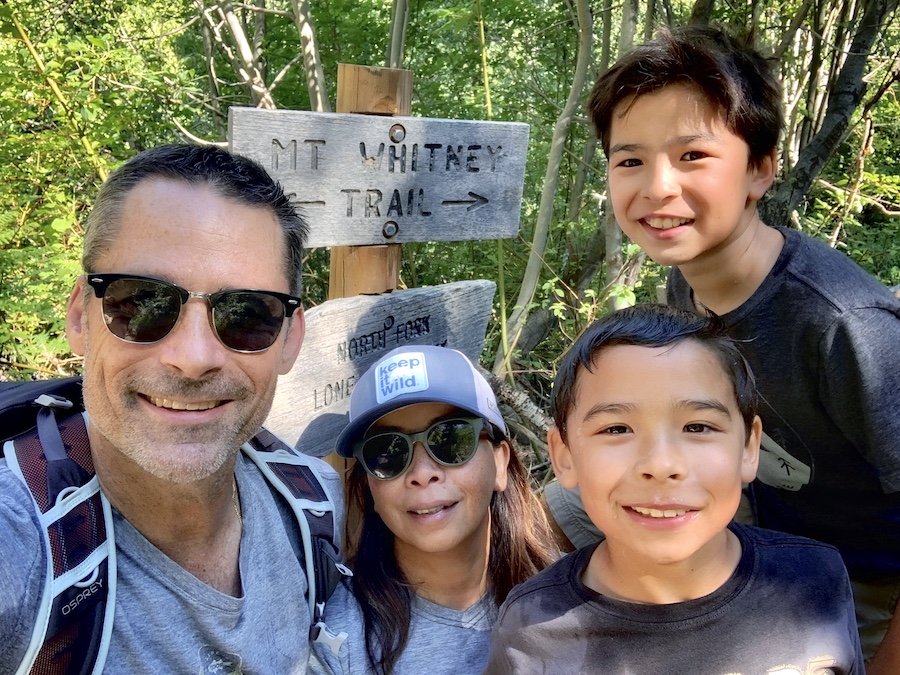
R&W: How did the Six-Pack of Peaks Challenge get started?
Kim: The Six-Pack of Peaks Challenge was originally created by Jeff Hester from SoCal hikers. They are the six highest peaks in Southern California. The original six peaks are Mount Wilson, Cucamonga Peak, Mount Baldy, San Bernardino Peak, and San Gorgonio, 82 miles total with over 27,000 ft. in vertical gain. I completed the challenge last year climbing 10 peaks. Having gained the strength and confidence through completing these peaks, and seeing how it changed my life I wanted to share the adventure and challenge with The Wander Women this year.
I began to recruit members who were interested and started training them. My role is to help them get stronger by leading training hikes and workouts a few times a week. My role is to be there for them physically and mentally. Because of my background in Sports Medicine, I’m able to advise them with their training routine and how to balance everything from pre to post-workout, and self-care.
R&W: How did you get started hiking?
Kim: With eight brothers I’ve always been active. I started hiking in college but for the longest time, I spent time at the beach surfing and playing beach volleyball competitively. Two and a half years ago I decided to get back into hiking, and since signing up for the challenge I’ve immersed myself in it – loving the mountains more each time.
When I walk among the trees I let go of all my restless energy and anxiety. There is something spiritual about walking in the forest and connecting nature through your senses. Nature is nurturing, and it is the one place where I can just let go and heal.
R&W: Describe the transformation of the Wander Women group.
Kim: Many of the ladies started out without much experience on the trail. After hiking for a few months consistently I saw a huge transformation in them. They are getting fit, and stronger – physically and mentally. They have gained confidence, are getting bolder, and are able to take on challenges that they never would have thought to do.
R&W: What are the benefits of hiking?
Kim: With so much in our world being out of control I encourage people to get outside and get exercise whether it’s biking, hiking, climbing. Whatever it is, just get outside and breathe. Mental health is so important at times like this. As for hiking, a long walk on the trail will help you lower blood pressure, decrease anxiety and depression. Even a small amount of time in nature can have an impact on our health. An hour of hiking on the trail will help you unplug from the news and social media. It will bring you to the present moment, de-stress, and relax you.
R&W: What tips can you share about getting started?
Kim: You don’t need much to get out on the trail and hike. For beginners, you just need a good pair of sneakers, water, and some snacks to get started. Make sure you have a map or some sort of mapping app, like All Trails. This helps with directions, tracking your mileage, and elevation gain. At the end of the week, it’s always cool to see how many miles you have hiked.
CORY REINMILLER
Snake Chaser
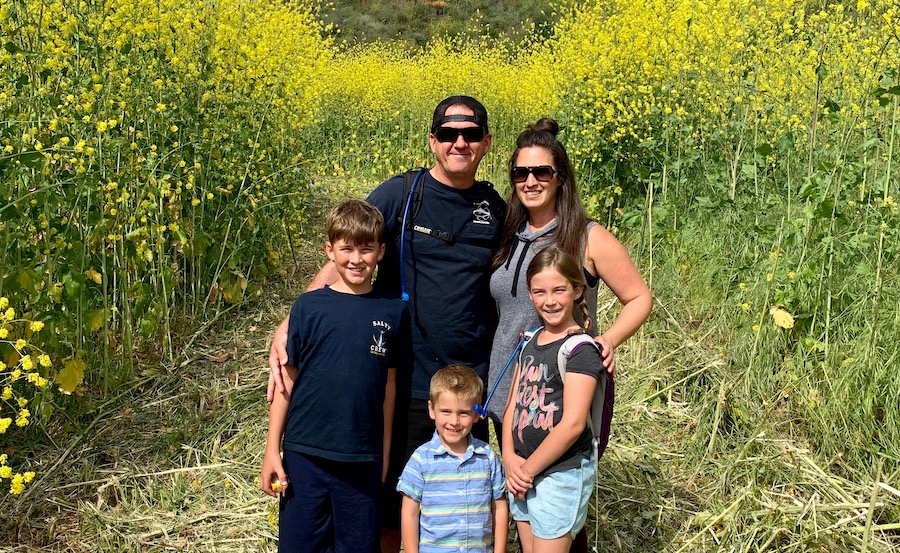
R&W: How did you become interested in snakes?
Cory: I’ve been interested in nature and wild animals for as long as I can remember. I’m an avid hiker and scuba diver. As a kid, I watched all the animal shows on National Geographic, Animal Planet, and the Discovery Channel. Guys like Steve Irwin and Jeff Corwin were my celebrities. I admired their focus on conservation as much as the animals they observed.
What interested me about snakes is how misunderstood they are and how difficult they are to find. Some people go their whole lives without ever experiencing the sound of a rattlesnake in person. I’m fortunate to live close to hiking trails and to have the opportunity to experience these animals on a regular basis.
R&W: What snakes are most commonly found in Ladera Ranch?
Cory: The most common snake I find in Ladera Ranch is the Southern Pacific Rattlesnake (Crotalus oreganus helleri) which have extremely potent venom, even among other species of rattlesnakes. The second most common snake I come across is the San Diego Gopher Snake (Pituophis catenifer annectens).
In Ladera, only two native snakes are dangerous to humans: the Southern Pacific Rattlesnake and the Red Diamond Rattlesnake, which is much more uncommon.
Rattlesnakes are “venomous” rather than “poisonous.” Venomous refers to something that bites or stings you for example and injects venom into you. Poisonous though usually refers to something toxic you either ingest or absorb. Rattlesnakes should never be approached, handled or killed. Doing so puts people in striking distance and could potentially result in serious injury. People have been killed by dead or decapitated rattlesnakes.
R&W: What should someone do if they encounter a snake while out on the trails?
Cory: If you’re unable to tell the difference between rattlesnakes and harmless snakes, I recommend to just leave them alone. Snakes will either lie still when you approach, relying on their camouflage in hopes you don’t recognize them, or they’ll try and get away. Leaving them alone will prevent a negative encounter or injury.
R&W: Who can someone call if they discover a snake in their backyard?
Cory: When I’m available, I will gladly remove a snake from your property. I’m blessed to be able to help my community and at the same time teach my kids about the importance of protecting the environment and helping our fellow neighbors. This also gives me the opportunity to talk to others about the importance of snakes, the difference in the local species, why they are coming onto their property and steps they can take to prevent them from returning.
R&W: What myth, misunderstanding or misperceptions do people have about snakes?
Cory: Snakes are misunderstood animals and want nothing to do with us. They would rather just be left alone and avoid human contact all together. To snakes, we are the big, scary predator they need to watch out for.
The myth I hear most is that “baby rattlesnakes are more dangerous than adult rattlesnakes because they can’t control their venom.” An adult rattlesnake is extremely more dangerous than a baby rattlesnake.
R&W: What tips can you share about being safe on the trails?
Cory: Be aware of your surroundings while out on the trail. Pay attention – often times snakes can be found lying on the trail. Recently, while taking photos of a rattlesnake, someone was walking toward me. With earbuds in, reading a book while walking, he had no idea he was about to walk right into my rattlesnake photo session. Hiking in this manner could result in someone not seeing a rattlesnake and they could accidentally step on it.
Also, look for other potential hazards like approaching mountain bikers. Have enough water with you, bring a fully charged cell phone, and make sure you don’t overexert yourself.
Cory notes that every animal plays an important role in a healthy ecosystem and should be allowed to live out that role. He says, “Yes, animals like rattlesnakes are extremely dangerous. Like sharks, rattlesnakes are also important predators in a healthy ecosystem. Admire rattlesnakes from a safe distance and appreciate how truly awesome they are.”
We hope that you’ll get outdoors, hit the trails, and enjoy the benefits that come from being in nature. Maybe it's a perfect time to enlist some friends to join you – and go for it!
Follow Cory:
Facebook: @rattlesnakechaser
YouTube:Lizards and Creatures bit.ly/LizardsAndCreatures
Reprint: This article originally ran in the Fall 2000 issue of Roots and Wings Magazine.
